Many home cooks and baking enthusiasts often wonder about the safe usage of aluminum foil in the oven.
Aluminum foil is a versatile kitchen tool known for its ability to wrap, cover, and protect food during cooking and storage.
However, one question that often arises is whether it is safe to put aluminum foil in the oven.
In this article, we will explore the topic of using aluminum foil in the oven, discussing the potential risks, safe practices, and alternative options.
We will delve into the importance of understanding the limitations of aluminum foil in high-temperature environments, such as the oven.
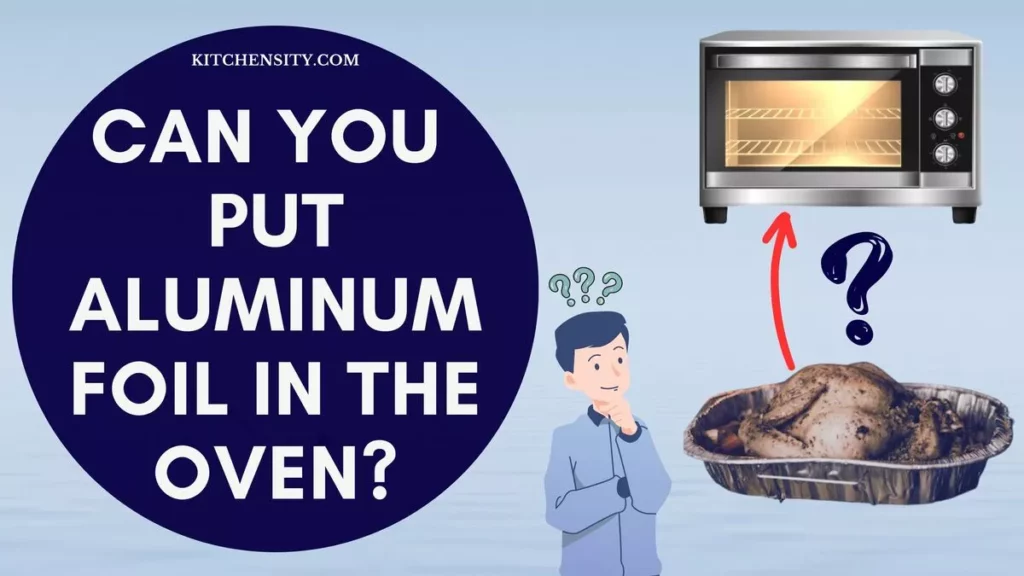
Table of Contents
- 1 Can You Put Aluminum Foil In The Oven?
- 2 How To Use Aluminum Foil In Oven?
- 3 Can You Put Oil On Aluminum Foil In The Oven?
- 4 Can You Put Aluminum Foil In The Oven Without A Pan?
- 5 Can You Use Aluminum Foil Pans In A Convection Oven?
- 6 Risks Of Using Aluminum Foil In The Oven
- 7 Safe Uses Of Aluminum Foil In The Oven
- 8 Alternative Options For Oven Cooking
- 9 Final Verdict
- 10 FAQs
- 10.1 Can You Put Aluminum Foil In The Oven On Broil?
- 10.2 Can You Put Aluminum Foil In The Oven For Pizza?
- 10.3 Can You Use Aluminum Foil In The Oven Instead Of Parchment Paper?
- 10.4 Which Way Do You Put Tin Foil In The Oven?
- 10.5 What Happens If You Put Foil In A Convection Oven?
- 10.6 Is It Safe To Put Aluminum Foil In A Gas Oven?
- 10.7 Can I Use Aluminum Foil In A Microwave Oven?
- 10.8 Can I Reuse Aluminum Foil After Cooking?
- 10.9 Can I Use Aluminum Foil To Store Food In The Fridge?
Can You Put Aluminum Foil In The Oven?
Yes, you can put aluminum foil in the oven. Aluminum foil is a versatile kitchen tool commonly used for wrapping, covering, and protecting food during cooking. However, it’s important to follow safety guidelines, monitor the foil’s placement, and avoid contact with heating elements to prevent potential hazards.
Also Read – How To Make Oven Racks Slide Easier?
How To Use Aluminum Foil In Oven?
Using aluminum foil in the oven can be a convenient and versatile cooking technique. Here’s a step-by-step guide on how to use aluminum foil in the oven:
- Preheat The Oven:
- Before you start using aluminum foil, preheat your oven to the desired temperature as specified in your recipe.
- Prepare The Foil:
- Tear off a piece of aluminum foil that is large enough to cover or wrap your food.
- Ensure that the foil is long enough to extend beyond the edges of the baking dish or cover the food completely.
- Shape The Foil:
- If you’re using aluminum foil to cover a dish, gently shape the foil to fit the contours of the dish.
- For wrapping food, create a loose pouch or packet by folding the foil around the ingredients.
- Apply Cooking Spray Or Oil (Optional):
- To prevent food from sticking to the foil, you can lightly coat it with cooking spray or brush it with a thin layer of oil.
- This step is particularly useful when grilling or baking delicate foods like fish or vegetables.
- Place The Food On The Foil:
- Carefully place the food on the prepared aluminum foil, ensuring it is centered and properly arranged.
- Leave sufficient space around the food to allow heat circulation for even cooking.
- Cover Or Wrap The Food:
- If you’re using aluminum foil to cover a dish, place the prepared foil over the top of the dish, crimping the edges to secure it.
- If you’re wrapping food, bring the edges of the foil together and fold them tightly to create a sealed packet.
- Put The Dish Or Foil Packet In The Oven:
- Place the dish or foil packet on a baking sheet or directly on the oven rack, depending on the recipe’s instructions.
- Ensure that the foil is not touching any heating elements or coming into direct contact with the oven walls.
- Monitor The Cooking Process:
- Keep an eye on the food as it cooks, following the recommended cooking time and temperature in your recipe.
- Adjust the cooking time if needed, depending on the thickness or quantity of the food being cooked.
- Remove And Uncover:
- Once the food is cooked to your desired level, carefully remove it from the oven.
- If you used aluminum foil to cover the dish, carefully remove the foil to allow the food to cool slightly.
- Serve And Enjoy: Plate the cooked food or transfer it to a serving dish, and savor your delicious creation.
Remember, it’s crucial to follow any specific instructions provided in your recipe regarding the use of aluminum foil in the oven.
You May Also Like: Best Lubricants For Oven Racks
Can You Put Oil On Aluminum Foil In The Oven?
Yes, you can put oil on aluminum foil in the oven, but it’s important to exercise caution and follow proper guidelines. When using aluminum foil in the oven, it’s common to apply oil to prevent food from sticking and to enhance flavors.
Here are a few key points to consider when using oil on aluminum foil in the oven:
- Choose The Right Type Of Oil:
- Opt for oils with high smoke points, such as vegetable oil, canola oil, or grapeseed oil.
- Oils with high smoke points can withstand the oven’s high temperatures without breaking down or producing smoke.
- Apply Oil To The Foil:
- Lightly coat the aluminum foil with a thin layer of oil.
- Use a brush or your fingers to evenly spread the oil on the foil’s surface.
- Ensure that the entire area where the food will be placed is coated with a thin layer of oil.
- Consider Food Placement:
- Place the oiled aluminum foil in the oven before preheating to prevent potential splattering.
- Carefully position the food on the oiled side of the foil, ensuring it is centered and properly arranged.
- Be Mindful Of Excess Oil:
- Avoid applying excessive amounts of oil, as it can drip onto the oven’s heating elements and cause smoke or potential hazards.
- Too much oil can also lead to excess smoke and can affect the flavor and texture of the food.
- Monitor Cooking Progress:
- Keep an eye on the food during the cooking process to prevent excessive oil from accumulating or causing flare-ups.
- If you notice excessive smoke or oil pooling, carefully remove the foil from the oven and address the situation before continuing.
It’s important to note that while using oil on aluminum foil in the oven is generally safe, it’s essential to follow the recommended guidelines and exercise caution.
Always refer to the specific recipe instructions or consult reliable sources for guidance on oil usage and cooking techniques.
By being mindful of these considerations, you can effectively use oil on aluminum foil in the oven to enhance your cooking experience and achieve delicious results while ensuring safety in the kitchen.
Also Read – How To Clean A Hand Mixer?
Can You Put Aluminum Foil In The Oven Without A Pan?
Yes, you can put aluminum foil in the oven without a pan, but there are important considerations to keep in mind to ensure safe and effective usage. When using aluminum foil directly in the oven without a pan, it’s crucial to follow these guidelines:
- Ensure Proper Heat Circulation:
- Without a pan, the foil should be arranged in a way that allows proper heat circulation around the food.
- Avoid completely sealing the food in the foil, as it can restrict airflow and affect the cooking process.
- Use A Double Layer Of Foil:
- To provide better insulation and prevent the foil from tearing or puncturing, use a double layer of aluminum foil.
- Place the food in the center of the foil, fold the edges over, and crimp them tightly to create a sealed packet.
- Create A Stable Surface:
- When placing the foil directly on the oven rack, ensure it is positioned securely and won’t tilt or spill the food.
- Avoid placing heavy or liquid-filled dishes on the foil without proper support to prevent accidents or spills.
- Monitor The Food:
- Keep a close eye on the cooking process to prevent the foil from touching any heating elements or coming into contact with the oven walls.
- If you notice the foil becoming too close to the heat source, adjust its position to maintain a safe distance.
- Protect The Oven:
- To catch any potential drips or spills, place a baking sheet or a sheet of foil on the lower rack to protect the oven from messes.
- This precautionary measure helps with easy cleanup and prevents damage to the oven.
It’s important to note that using aluminum foil directly in the oven without a pan may have some limitations. The absence of a pan can affect the food’s cooking time and result in uneven heat distribution.
Therefore, it’s recommended to use pans or baking dishes whenever possible for optimal cooking performance.
You May Also Like: Best Hand Mixer For Mashed Potatoes
Can You Use Aluminum Foil Pans In A Convection Oven?
Yes, aluminum foil pans can generally be used in a convection oven. However, there are a few important points to consider:
- Choose The Right Pan:
- Ensure that the aluminum foil pan you use is labeled as “convection oven-safe.”
- Not all aluminum foil pans are designed to withstand the high temperatures and airflow of a convection oven, so it’s essential to select pans specifically made for convection cooking.
- Allow Proper Airflow:
- Convection ovens rely on the circulation of hot air to cook food evenly.
- When using aluminum foil pans in a convection oven, it’s important to allow proper airflow around the pan.
- Avoid tightly covering the pan with foil, as it can restrict air movement and affect the cooking process.
- Adjust Cooking Time And Temperature:
- Convection ovens generally cook food faster and more evenly than conventional ovens.
- When using aluminum foil pans in a convection oven, it’s advisable to reduce the cooking time and lower the oven temperature as recommended in your recipe or follow the manufacturer’s instructions for convection cooking.
- Monitor Cooking Progress:
- Keep a close eye on your food while it’s cooking in the convection oven. Due to the enhanced heat distribution, dishes may cook more quickly than expected.
- Regularly check for doneness and adjust cooking time or temperature if needed.
It’s important to note that not all aluminum foil pans are suitable for convection ovens, as some may not be able to withstand higher temperatures or airflow.
Always refer to the manufacturer’s instructions or packaging labels to ensure the pan is explicitly designed for convection oven use.
You May Also Like: Best Hand Mixers for Whipping Cream
Risks Of Using Aluminum Foil In The Oven
When it comes to using aluminum foil in the oven, it’s crucial to understand the potential risks involved. While aluminum foil is generally considered safe for various cooking applications, there are specific risks associated with using it in the oven environment.
Melting Hazard
Exposing aluminum foil to high temperatures in the oven can cause it to melt.
- Aluminum foil has a low melting point of around 1220°F (660°C).
- If the foil melts, it can create a fire hazard in the oven.
- Melted foil can drip onto the heating element or other hot surfaces, potentially starting a fire.
Sparks And Oven Damage
Direct contact between aluminum foil and the oven’s heating element can lead to sparks and oven damage.
- If the foil comes into contact with the heating element, it may cause sparks.
- These sparks can pose a fire risk and damage the oven.
- It is important to prevent the foil from touching the heating element to avoid these potential issues.
Obstruction Of Heat Circulation
Covering the entire oven rack with aluminum foil can impede proper heat circulation.
- Blocking the airflow in the oven can disrupt the cooking process.
- Uneven cooking may occur if the foil obstructs heat distribution.
- It is advisable to avoid covering the entire oven rack with foil to maintain proper heat circulation.
To ensure the safe usage of aluminum foil in the oven, follow these steps:
- Check The Manufacturer’s Instructions:
- Refer to the manufacturer’s instructions for your specific oven model regarding the use of aluminum foil.
- The instructions may provide specific recommendations or precautions to follow.
- Following the manufacturer’s guidelines ensures the safe usage of aluminum foil in your oven.
- Use Aluminum Foil Sparingly:
- Use aluminum foil sparingly and only when necessary.
- Avoid covering the heating element or blocking air vents in the oven.
- Using foil excessively can increase the risk of hazards and disrupt the cooking process.
- Proper Foil Placement:
- When using aluminum foil to cover dishes or wrap food, ensure proper placement.
- Make sure the foil is loosely draped and doesn’t touch the sides of the oven.
- This allows for proper heat circulation and minimizes the chances of contact with the heating element.
Also Read – Best Coffee Makers Under 200 Dollars
Safe Uses Of Aluminum Foil In The Oven
Although there are risks involved, there are still safe ways to use aluminum foil in the oven. Here are a few examples:
- Insulating Baked Goods:
- Aluminum foil can be used to create a tent or cover for baked goods that tend to brown too quickly.
- Shape the foil loosely over the dish, ensuring it doesn’t come into direct contact with the heating element.
- The foil acts as insulation, preventing excessive browning and promoting even baking.
- Lining Baking Sheets:
- Aluminum foil can be used to line baking sheets, making cleanup easier and preventing food from sticking to the pan.
- Ensure that the foil is flat and smooth, avoiding any creases or wrinkles that may cause uneven cooking.
- The foil acts as a protective barrier, keeping the baking sheet clean and reducing the need for scrubbing.
- Wrapping Foods:
- When cooking delicate foods such as fish or vegetables, aluminum foil can be used to wrap them.
- Wrapping the food in foil helps retain moisture, preventing it from drying out during the cooking process.
- Ensure that the foil is sealed tightly to create a packet, trapping the steam and enhancing the flavors.
- Shielding Oven Parts:
- Aluminum foil can be used to shield certain oven parts from excessive heat or potential spills.
- For example, if you’re roasting a dish that may bubble or splatter, you can place a piece of foil on the lower rack to catch any drips.
- This protects the oven from potential damage and makes cleaning easier.
- Creating Make-Shift Lids:
- In some cases, you may need to cover a dish in the oven but don’t have a suitable lid.
- Aluminum foil can be used to create a makeshift lid, preventing moisture loss and promoting even cooking.
- Simply shape the foil over the dish, ensuring a snug fit without obstructing airflow.
- Separating Food In The Oven:
- Aluminum foil can be used to create dividers or separate ingredients in the oven.
- This can be useful when cooking multiple dishes or ingredients on the same baking sheet, preventing flavors from mixing.
- The foil acts as a barrier, keeping the different components separate and maintaining their flavors.
Remember, even when using aluminum foil for these safe purposes, it’s crucial to follow the guidelines and precautions mentioned earlier.
Always prioritize safety, avoid direct contact between the foil and heating elements, and ensure proper heat circulation in the oven.
Also Read – How To Program A Black And Decker Coffee Maker?
Alternative Options For Oven Cooking
If you prefer not to use aluminum foil in the oven, there are alternative options that can provide similar benefits. Consider using oven-safe glass or ceramic cookware, which offer a safe and reliable alternative to aluminum foil.
Oven-Safe Glass Cookware
- Glass baking dishes and casserole pans are popular choices for oven cooking.
- These dishes are made from tempered glass that can withstand high temperatures without the risk of melting or releasing harmful substances.
- Glass cookware provides excellent heat distribution, allowing for even cooking of your dishes.
- They are easy to clean and resistant to staining or absorbing odors.
Ceramic Cookware
- Ceramic baking dishes and pans are another great alternative to aluminum foil.
- Made from clay and hardened by firing at high temperatures, ceramic cookware is safe for use in the oven.
- Ceramic dishes are known for their ability to retain heat, promoting even cooking and enhancing the flavors of your dishes.
- They are durable, non-reactive, and resistant to scratches, making them a long-lasting option.
Silicone Baking Mats
- Silicone baking mats are non-stick mats that can be used as a substitute for aluminum foil.
- These mats are placed directly on baking sheets or oven racks, providing a non-stick surface for cooking.
- Silicone mats can withstand high temperatures without melting or releasing harmful substances.
- They are reusable, easy to clean, and promote even browning and cooking of your food.
Oven-Safe Stainless Steel Cookware
- Stainless steel cookware can also be used in the oven for various cooking applications.
- Look for stainless steel pans and baking sheets that are labeled as oven-safe.
- Stainless steel is a durable and versatile material that can withstand high temperatures without melting or warping.
- It provides excellent heat distribution and is easy to clean.
By utilizing these alternative options, you can cook your favorite dishes in the oven without relying on aluminum foil.
Each of these options offers its advantages in terms of heat distribution, durability, and ease of cleaning. Choose the option that best suits your cooking needs and preferences.
Also Read – What To Look For When Buying An Air Fryer?
Final Verdict
So, aluminum foil can be used in the oven with proper precautions and considerations. While it offers convenience and versatility in cooking, it’s essential to be mindful of the potential risks associated with high temperatures, such as melting or sparking.
By following recommended guidelines, such as using oven-safe glass or ceramic cookware as alternatives, one can safely navigate the use of aluminum foil in the oven and enjoy its benefits for various cooking applications.
Remember to prioritize safety, experiment with alternative options, and always refer to specific recipe instructions or trusted sources for guidance.
Also Read – How To Clean A Coffee Maker With Baking Soda, Vinegar, Dishsoap?
FAQs
-
Can You Put Aluminum Foil In The Oven On Broil?
Yes, you can put aluminum foil in the oven on broil, but it’s important to exercise caution as the high temperatures may cause the foil to melt or spark.
-
Can You Put Aluminum Foil In The Oven For Pizza?
Yes, you can put aluminum foil in the oven for pizza, but it’s advisable to place the pizza on a baking sheet or pizza stone for better heat distribution and to prevent the foil from sticking to the pizza.
-
Can You Use Aluminum Foil In The Oven Instead Of Parchment Paper?
Yes, you can use aluminum foil in the oven as a substitute for parchment paper, but be aware that it may not provide the same non-stick properties. Consider greasing the foil lightly or using cooking spray to prevent food from sticking.
-
Which Way Do You Put Tin Foil In The Oven?
When using tin foil in the oven, it’s recommended to place the shiny side facing up to reflect heat and promote even cooking. However, both sides of the foil can be used for cooking purposes.
-
What Happens If You Put Foil In A Convection Oven?
If you put foil in a convection oven, it can disrupt the airflow and affect the oven’s performance. It may cause uneven cooking or prevent proper browning. It’s generally best to avoid putting foil directly on the oven’s heating elements or covering the oven racks with foil in a convection oven.
-
Is It Safe To Put Aluminum Foil In A Gas Oven?
Yes, it is generally safe to use aluminum foil in a gas oven. However, make sure to follow the safety guidelines and avoid direct contact with the heating element.
-
Can I Use Aluminum Foil In A Microwave Oven?
No, it is not safe to use aluminum foil in a microwave oven. The foil can cause sparks and potentially damage the oven.
-
Can I Reuse Aluminum Foil After Cooking?
Aluminum foil can be reused if it is still in good condition and hasn’t come into contact with raw meat or other potentially contaminated substances. Ensure it is clean and free from any food debris before reusing it.
-
Can I Use Aluminum Foil To Store Food In The Fridge?
Yes, aluminum foil can be used to wrap and store food in the fridge. It helps to keep the food fresh and prevents odors from spreading.
Katrina Smith is a seasoned expert with over 25 years of experience in all things related to cooking and the kitchen. As an avid cook and kitchen enthusiast, she is passionate about sharing her knowledge and expertise on cookware, kitchen appliances, kitchen tips, and kitchen staples.
Through her articles and reviews, Katrina aims to inspire and help others improve their cooking skills, experiment with different ingredients, and invest in quality cookware and appliances.

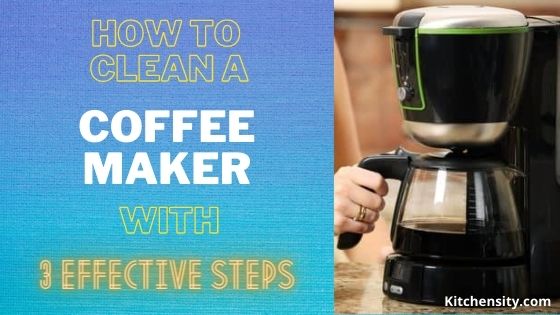
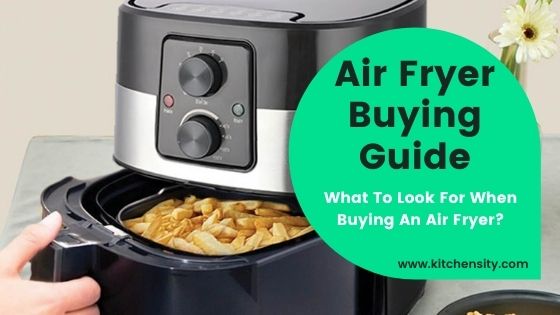
![Best Lubricants For Oven Racks [For Easy Cleaning] 5 Best Lubricants For Oven Racks](https://www.kitchensity.com/wp-content/uploads/2022/10/Best-Lubricants-For-Oven-Racks.jpg)
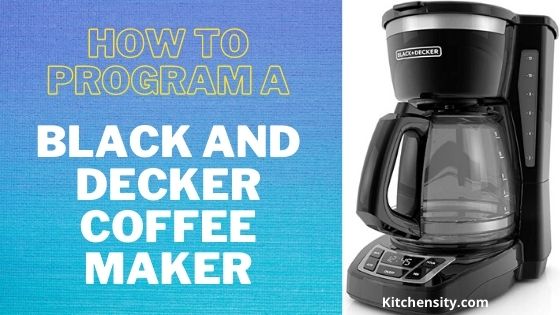
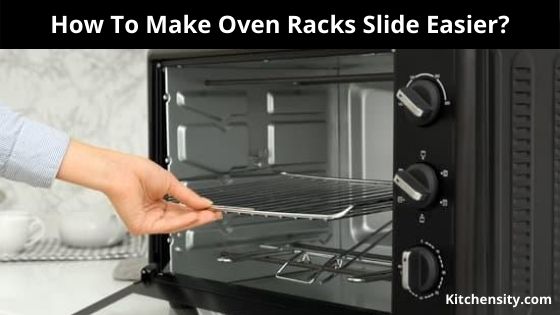
![5 Best Hand Mixer For Mashed Potatoes [Ultimate Guide] 8 Best Hand Mixer For Mashed Potatoes](https://www.kitchensity.com/wp-content/uploads/2020/07/Best-Hand-Mixer-For-Mashed-Potatoes.jpg)